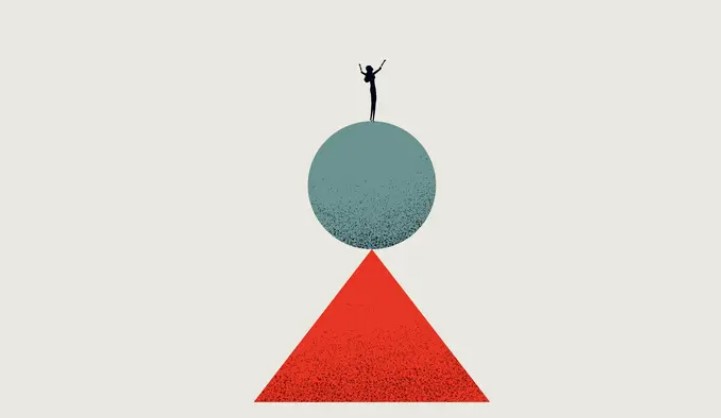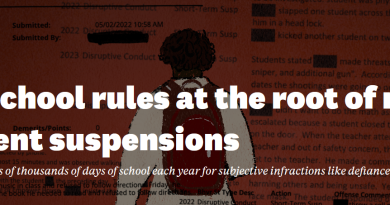Coaching Techniques that Empower Teachers
As students file into her classroom, Sarah, a high school teacher, notices one student is visibly upset. She walks over to ask the student, John, if everything is OK, but he ignores her and puts his head down. Sarah begins class, but John refuses to participate in any activities. When she tries to engage him in conversation, he is unresponsive. Other students notice and start whispering to each other, creating a distraction. As class progresses, John gets increasingly agitated and his behavior becomes disruptive. He starts tapping his pencil loudly on his desk, and when Sarah asks him to stop, he throws the pencil across the room, prompting students to laugh. Though Sarah knows the situation is getting out of control, she disregards John and lets the laughter boil over until the bell rings.
I observed this scene unfold during an observation. As her instructional coach, I sat in the back of the classroom and closely watched Sarah’s reactions. Afterward, we unpacked what went wrong and, most important, what Sarah was thinking about when the situation started to unravel.
“I just didn’t want to create an explosive situation with John,” Sarah explained.“To what extent is that an assumption about how John would react?” I asked in response.
It turned out that John had never “exploded” at Sarah, but she has had other students react negatively to her behavior corrections in the past. Sarah felt disempowered and operated from a place of fear: past experiences led her to assume that John might “explode,” so she responded by ignoring his escalating behavior in an attempt to avoid a potentially negative situation.
Understanding the Effects of Disempowerment
Teachers like Sarah are under enormous pressure to manage students’ behaviors, support students’ social-emotional well-being and mental health, address issues of learning loss, incorporate emerging technologies into instruction—and the list goes on. It’s no wonder teachers might feel disempowered.
Disempowerment limits an individual’s sense of agency, control, and efficacy, undermining their ability to achieve goals or fulfill their potential. It can be characterized by a sense of helplessness or resignation that leads to negative mindsets, including:
-
Victim mindset: This mindset is characterized by a belief that one is powerless because they are at the mercy of external circumstances and their problems are caused by factors entirely outside of their control. Individuals with a victim mindset may feel sorry for themselves, blame others, or avoid taking responsibility for their own actions or outcomes.
-
Fixed mindset: This mindset is characterized by a belief that one’s abilities and traits are fixed and unchangeable and that success or failure is determined by innate talent or intelligence. Individuals with a fixed mindset may avoid challenges or new experiences that might reveal their limitations and may give up more easily when faced with obstacles or setbacks.
-
Scarcity mindset: This mindset is characterized by a belief that there is a limited amount of resources or opportunities available and that one must compete or fight for their share. Individuals with a scarcity mindset may feel jealous or resentful of others’ successes and may engage in self-defeating behaviors such as underestimating their own worth.
Significantly, however, teachers can learn how to recognize what disempowerment looks like in the context of their professional lives and better understand what contributes to feeling disempowered. With awareness, effort, and support, they can seek out attitudes and beliefs that empower their sense of agency and encourage a growth-oriented perspective. To help Sarah shift her mindset and feel more empowered, I used two coaching methods I’d created earlier in my career: an assumption test and a mastery experience.
Testing Assumptions for Accuracy
Assumption testing is a coaching technique used to challenge an individual’s underlying beliefs and assumptions that may be limiting their personal or professional growth. The purpose of assumption testing is to increase the individual’s awareness of their assumptions and to test whether those assumptions are accurate or useful.
Assumptions are beliefs that we hold to be true about ourselves, others, or the world around us. These beliefs can be either positive or negative and can have a significant impact on our thoughts, feelings, and behaviors. To help an individual examine their assumptions, a coach can ask questions like:
-
What evidence do you have to support this assumption?
-
Is there any evidence that contradicts this assumption?
-
How does this assumption make you feel?
-
Is this assumption helping or hindering your progress toward your goals?
By examining assumptions in this way, teachers can better understand beliefs that may be limiting their growth and can begin to challenge and replace them with more accurate and helpful beliefs.
In our post-observation feedback session, I asked Sarah to reflect on her assumptions related to correcting students. Her thought patterns resembled a rabbit hole, bouncing from “I will lose control” to “they won’t trust me anymore.” We even discussed a negative experience she had in childhood with a teacher correction that influenced her current thinking. Sarah’s teacher had publicly embarrassed her for talking to a classmate and she was scared of replicating that experience for her students.
To help Sarah reframe her assumptions about correcting students, we listed the criteria for an effective student correction: a) it is carried out in private, b) it gives the student the “why” behind the expectation, c) it is exceptionally clear on next steps if the behavior continues, and d) it is conveyed in a neutral and firm tone.
Given these criteria, we landed on trying out a private individual correction—a technique that involves quietly correcting student behavior at their seat after directing the class to complete another task. We first practiced the technique without students present. I prompted Sarah to reflect during the practice: “What assumptions are you making about how students will react?” I wrote down each assumption she made and said, “We are going to come back to these after you put this technique to the test.”
After she tried the technique with her students, including John, we debriefed. “To what extent did your assumptions become a reality?” I asked her. It turns out, her assumptions were inaccurate. John’s behavior didn’t escalate further when corrected, and he came into the class the next day ready to learn.
To be clear, challenging assumptions in a single circumstance does not mean that all assumptions go away. However, over time, teachers can learn to pause and ask themselves the question, “Is my thinking an assumption?” Ultimately, assumption tests can empower teachers to take action on their own, absent a coaching experience.
The Power of Feeling Accomplished
Another key coaching method for helping teachers feel more empowered is referred to as a mastery experience, in which a coach helps a teacher reach mastery in a specific skill. Mastery experiences are different from a typical coaching cycle because they require more intervention, involvement, and accountability from the coach, engineering a concrete “win” so that the teacher can continue momentum on their own (get “unstuck”).
Mastery experiences can vary in context and scope, ranging from achieving a simple personal action step (writing a daily “to do” list to support personal organization and sense of control) to a larger-scale accomplishment (giving strong, assertive directions throughout the day to support classroom management). Through mastery experiences, teachers can gain a sense of growth and achievement, resulting in increased confidence and self-efficacy.
Mastery experiences are a critical component of many theories of motivation and learning, such as self-determination theory and social-cognitive theory. These theories suggest that individuals are most likely to be motivated and engaged when they are working toward goals that are meaningful, challenging, and provide a sense of mastery when achieved.
After testing Sarah’s assumptions, she tried a private individual correction with John, as described previously. We then built on that success by working on a second technique known as a positive-group correction, where she corrected larger groups of students using a corrective tone. After the students started an independent practice, I took a few students who struggled more into the hallway to complete their work. At that point, Sarah had fewer students to manage so she felt safer to practice the technique. Afterwards, we debriefed. Sarah reflected that she felt she had mastered the positive-group correction because the conditions were set up for her to practice it without major distraction.
In essence, this coaching was a form of learning by design. Sarah needed a boost in confidence and momentum. Removing barriers allowed her to feel more confident in her overall ability to manage her classroom, making future coaching cycles easier. Removing a few students removed the mental block that Sarah had.
Reshaping Teachers’ Mindsets
Assumption tests and mastery experiences can shape mindsets and behavior in several ways:
-
Increasing confidence: Successfully completing a challenging task or achieving a desired outcome can increase an individual’s confidence and sense of self-efficacy. This can help to shift their mindset from one of self-doubt to one of confidence and optimism.
-
Reinforcing a growth mindset: Assumption tests and mastery experiences can reinforce the idea that success is achieved through effort and perseverance rather than innate talent or ability. This can help individuals develop a growth mindset, in which they believe that they can strengthen their abilities through hard work and dedication.
-
Promoting motivation: These coaching methods can be motivating, as they provide a sense of accomplishment and progress toward a goal. This can help teachers stay motivated and committed to their goals, even in the face of obstacles or setbacks.
-
Expanding possibilities: Successfully completing a challenging task or achieving a desired outcome can help to break down limiting beliefs or assumptions about one’s abilities and open up new possibilities for growth and development.
By providing a sense of accomplishment, promoting confidence and motivation, and expanding beliefs about what is possible, these coaching methods can lead to increases in self-efficacy and teacher performance.
With these tools, Sarah was able to master two concrete skills: a private individual correction and a positive group correction. She no longer disregarded disruptive behavior but faced it head on. She had the confidence in herself and belief in her students to persist.
Source:https://www.ascd.org/blogs/coaching-techniques-that-empower-teachers




